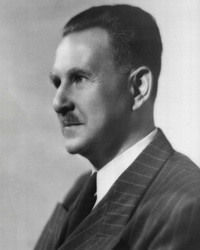 |
|
Prof. Henry H. Hausner was an early leader and organizer in powder metallurgy. He was born in 1900 in Vienna, Austria, and died in Salzburg, Austria, on 4 July 1995, having spent the majority of his life in New York. He arrived in the USA with a doctorate from the University of Vienna prior to World War II and became involved in powder metallurgy of refractory systems – W, Zr, W-Cu, Mo. Hausner wrote major reports on beryllium, molybdenum, zirconium, iron, and uranium processing, and was involved in many projects via his consulting. Hoeganaes Corporation printed several of his booklets to help promote the field.
Hausner bragged how he taught Albert Einstein powder metallurgy. During a visit to the Sylvania Bayside Laboratories (Long Island, New York), Einstein became engaged by the subject. Thus, Hausner provided Einstein with a tutorial on the process, most likely in German. Kuczynski and Hausner both worked at the facility on projects related to refractory metals (tungsten, molybdenum) and nuclear materials, and both taught at Brooklyn Polytechnic Institute. Hausner was involved with George Ansell and Fritz Lenel at Rensselaer Polytechnic Institute as they launched an educational program after World War II.
Prof. Hausner was the consummate organizer. After the success of his student, Kempton Roll, in organizing the metal powder companies, Hausner became editor of the journal and conference proceedings for 25 years - International Journal of Powder Metallurgy and Modern Developments in Powder Metallurgy. He co-chaired meetings, edited handbooks including the Handbook of Powder Metallurgy, and wrote monographs on emerging ideas such as powder forging. He taught a popular extension course on powder metallurgy for New York University, where he held an adjunct professor position. He introduced people to the field and was always encouraging young engineers to become involved, including this author. He pioneered many early concepts in the processing of metal powders. In retirement, Hauser moved to Salzburg, Austria, to follow his deep interest in music by Mozart.
Taken from “Sintering Science: An Historical Perspective" by R. German

